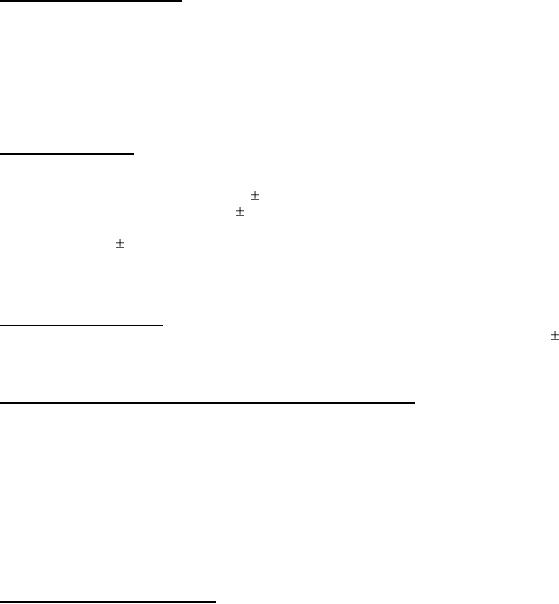 |
|||
|
|
|||
| ||||||||||
|
|  MIL-C-11015E
4.7.4 Insulation resistance (see 3.7). Capacitors shall be tested in accordance with method 302 of MIL-STD-202.
The following details shall apply:
(a) Test conditions - As specified (see 3.1).
(b) Special conditions - If a failure occurs at a relative humidity over 50 percent, the insulation resistance may
be measured again at any relative humidity less than 50 percent.
(c) Points of measurement - Unless otherwise specified (see 3.1), between the capacitor-element terminals.
4.7.5 Capacitance (see 3.8). Capacitors shall be tested in accordance with method 305 of MIL-STD-202. The
following details and exceptions shall apply:
(a) Test frequency - 100pF or less - 1MHz 100kHz.
Over 100pF - 1kHz 100 Hz.
(b) Test voltage - 1.0 0.2 volt rms.
Note: Following a dielectric withstanding voltage or insulation resistance test,
capacitance measurement may be delayed for a period of time up to 24 hours.
4.7.6 Dissipation factor (see 3.9). Dissipation factor shall be measured with a bridge or other suitable equipment
at the frequency and voltage specified in 4.7.5. The inherent accuracy of the measurement shall be 2 percent of
the reading plus 0.1 percent DF (absolute) unless otherwise specified. Suitable measurement techniques shall be
used to minimize errors due to the connections between the measuring apparatus and the capacitor.
4.7.7 Shock, specified pulse (all styles except CK22, and CK27) (see 3.10). Capacitors shall be tested in
accordance with method 213 of MIL-STD-202. The following details and exceptions shall apply:
(a) Mounting - Capacitors shall be rigidly mounted by the body.
(b) Test-condition letter - I (100 G's).
(c) Measurements during shock - During the last shock in each direction, an electrical measurement shall be
made to determine intermittent contacts of 0.5 ms or greater duration, or open- or short-circuiting.
(d) Examination after shock - Capacitors shall be visually examined for evidence of breakdown, arcing,
and mechanical damage.
4.7.8 Vibration, high frequency (see 3.11). Capacitors shall be tested in accordance with method 204 of
MIL-STD-202. The following details and exceptions shall apply:
(a) Mounting - Unless otherwise specified (see 3.1), capacitors shall be rigidly mounted on a mounting fixture
by the body. For styles other than feed-through, leads shall be secured to rigidly supported terminals, so
spaced that the length of each lead from the capacitor is approximately .375 inch (22.22mm) when
measured from the edge of the supporting terminal. Leads shall be within 15 degrees of being parallel;
each lead in disk types shall be in the plane of the flat surface from which it extends. When securing leads,
care should be taken to avoid pinching the leads. The mounting fixture shall be so constructed as to
preclude any resonance within the test range. An examination of the mounting fixture shall be made on a
vibrator. If any resonant frequencies are observed, adequate steps shall be taken to dampen the structure.
(b) Electrical-load conditions - During the test, a dc potential equal to 125 percent of the rated voltage (see
3.1) shall be applied between the terminals of the capacitor.
(c) Test-condition letter - B (15 G's) or D (20 G's) (see 3.1).
(d) Duration and direction of motion - 2 hours in each of three mutually perpendicular directions (total of 6 hours).
(e) Measurement during vibration - During the last cycle in each direction, an electrical measurement shall be
made to determine intermittent contacts of 0.5 ms or greater duration or open-circuit or short-circuiting.
12
|
|
Privacy Statement - Press Release - Copyright Information. - Contact Us |